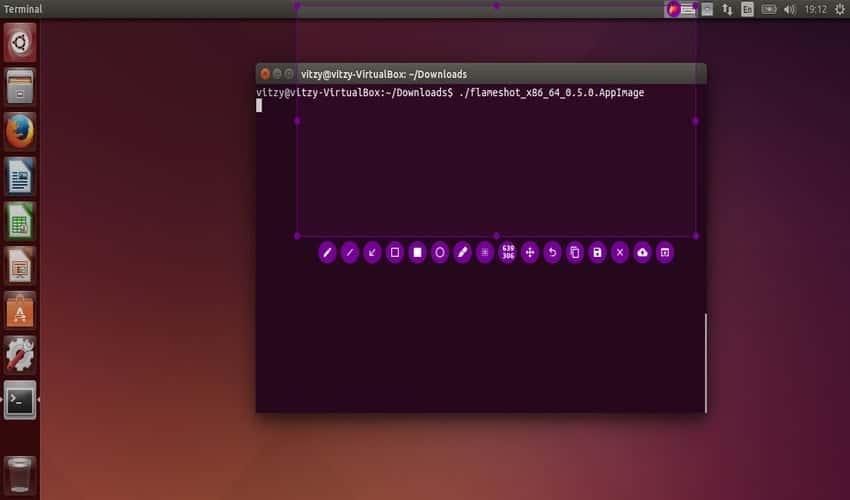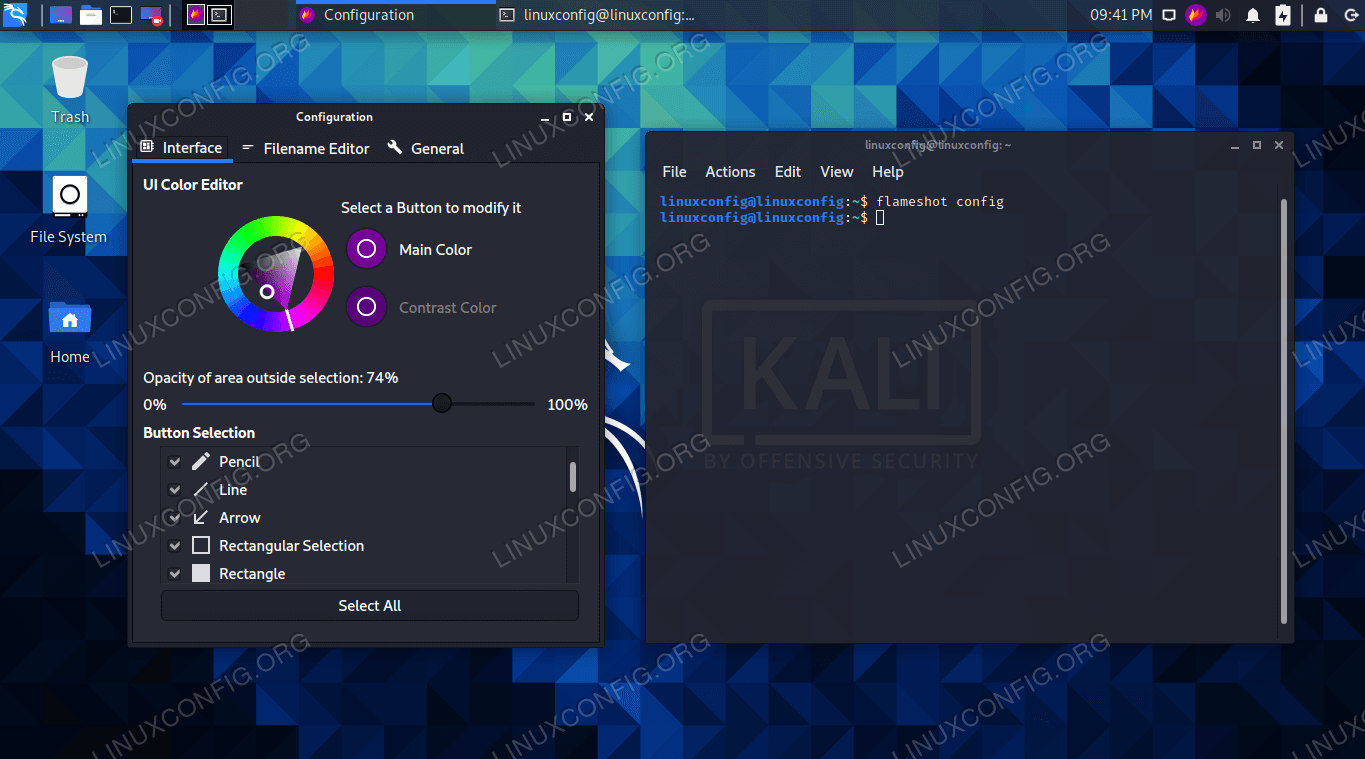

That is what prompted me to try to do screenshots is my configurations are pushing things and am trying to capture glitches along the way. I wish I had saved a System Info shot of that.
#Flameshot commands install
I should mention too that I on my first fresh boot installed through Terminal cinnamon, alien, yolo, and some other software before the systemctl reboot and all was going pretty much the same as my F30 Workstation except for perpetual Browser Tab Crashes and ultimately rebooting into what was almost like a fresh new Install all that was left was Cinnamon and Etherape on a quick glance. I did most all of my earlier software installations through Terminal with # rpm-ostree install xxx xxxx Commands and pretty much anything in yum or dnf as well as rpm fusion installed. And my reboot earlier took most of my earlier software installations out. Pixelate: To pixelate (or blur out) sensitive information in an imageįlameshot's GUI is pretty intuitive and works well, but if you want a faster way to capture screenshots, you can use its CLI instead, which offers various commands and options for taking screenshots and other related actions.I have what I believe to be a CMOS Battery on its death bed issue? My Browsers crash often.flameshot is a screenshot tool that aims to be powerful yet simple-to-use.
#Flameshot commands manual
Size: To view the dimensions of the captured screenshot This manual page documents briefly the flameshot command as provided by flameshot package.Available options include line, arrow, rectangle, and circle Now, you need to change the keyboard shortcut for Saving a screenshot to Pictures from Prt Sc to anything else (a button you don’t use frequently). Next, head inside the Keyboard Shortcuts option. Shapes: To draw attention to an element on the screenshot. Head to the system settings and navigate your way to the Device options.Available options include pen, marker, and text



Similarly, you can install Flatpak using our guide on installing Flatpak. If not, follow the instructions in our detailed Snap Store guide to install the package manager first. If this returns a version number, it indicates Snap is present on your system. on screenshots taken using Flameshot, and then putting them into clipboard. On openSUSE, run: zypper install flameshot If youre using any other Linux distro, you can install Flameshot using Snap or Flathub. To verify if your system has Snap, run: snap -version dmenushot - dmenushot provides a menu with set of custom commands to perform. For either of these methods, though, you need to have the appropriate package manager installed on your computer. If you're using any other Linux distro, you can install Flameshot using Snap or Flathub. On openSUSE, run: zypper install flameshot To install Flameshot on Fedora, CentOS, or RHEL, use: sudo dnf install flameshotĪrch Linux users can install Flameshot using: pacman -S flameshot


 0 kommentar(er)
0 kommentar(er)
